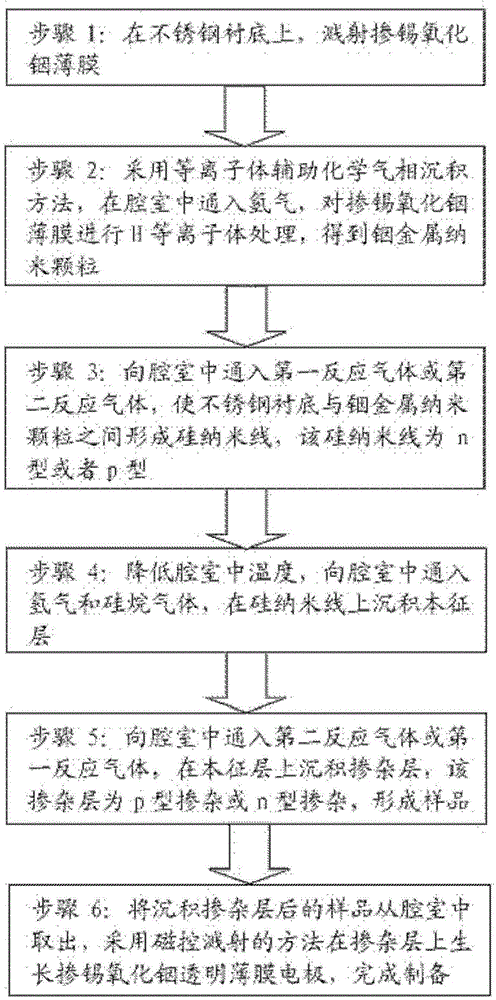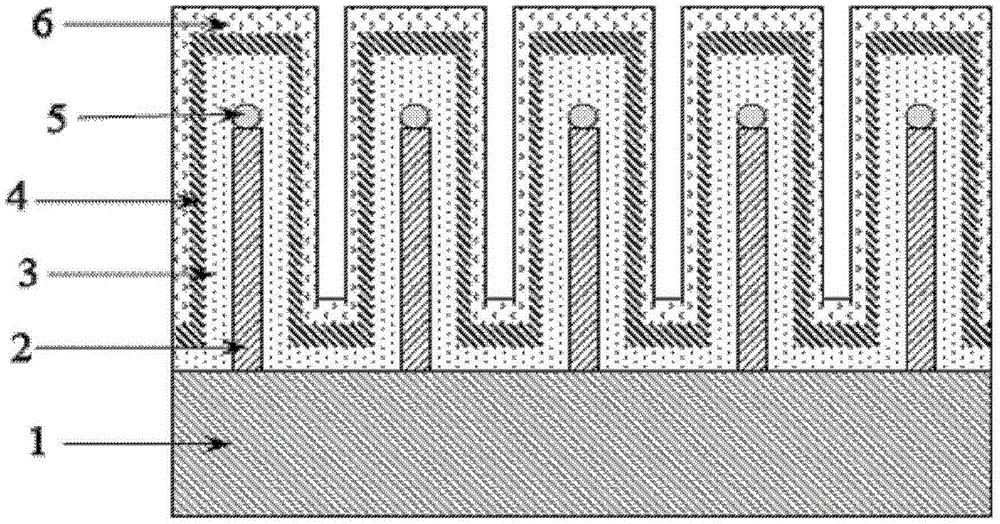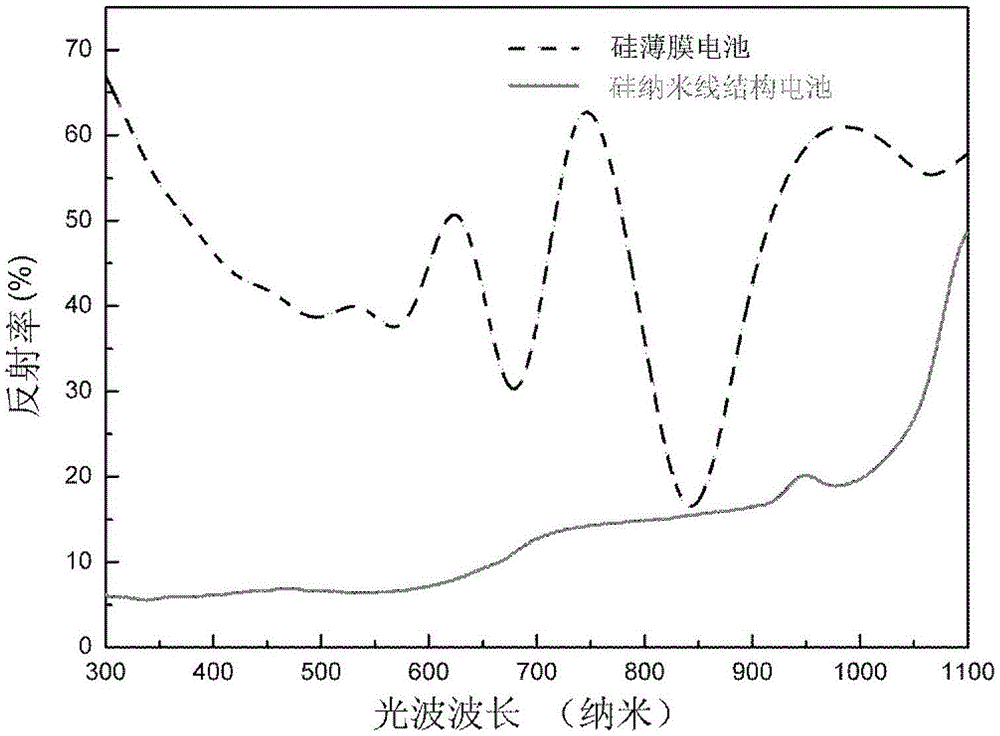Method for preparing silicon thin-film solar cells with silicon nano-wire structures
A technology of solar cells and silicon nanowires, applied in the field of solar cells, can solve the problems of difficulty in reducing the cost and high cost, etc.
- Summary
- Abstract
- Description
- Claims
- Application Information
AI Technical Summary
Problems solved by technology
Method used
Image
Examples
Embodiment 1
[0020] See figure 1 As shown, the present invention provides a method for preparing a silicon thin film solar cell with a silicon nanowire structure, which includes the following steps:
[0021] Step 1: Sputter a tin-doped indium oxide film on a stainless steel substrate. The mass ratio of tin-steel in the sputtering target is: Sn:In=(0-1):9. Sputtering thickness is 5-10 nanometers;
[0022] Step 2: Using a plasma-assisted chemical vapor deposition method, hydrogen gas is introduced into the chamber, and the tin-doped indium oxide film is subjected to H plasma treatment to obtain indium metal nanoparticles. The power density in the chamber is 0.1W / cm 2 -1.0W / cm 2 , The reaction time is 5 minutes-10 minutes, the reaction gas pressure is 100Pa-200Pa, the chamber temperature is 300℃-450℃, and the diameter of the obtained indium metal nanoparticles is 10-300nm;
[0023] Step 3: Then pass the first reaction gas into the chamber to form silicon nanowires between the stainless steel subst...
Embodiment 2
[0028] It is basically the same as embodiment 1, except that step 3 uses a second reaction gas. The volume ratio of the second reaction gas in the chamber of step 3 is hydrogen, silane gas and borane gas: hydrogen: silane gas :Pure borane gas=100:(1-3):(0.02-0.1), the obtained p-type silicon nanowire
[0029] Step 5 is to use the first reaction gas. In step 5, the first reaction gas in the chamber is hydrogen, silane gas and phosphane gas, and the volume ratio is: hydrogen: silane gas: phosphane gas = 60: (5-10 ): (0.05-0.1), n-type doped, n-type layer obtained.
[0030] See figure 2 , Which is a schematic diagram of the structure of the solar cell obtained by this method, where 1 is a stainless steel substrate, 2 is an n(p) silicon nanowire, 3 is an intrinsic layer silicon film, and 4 is a p(n) layer silicon Thin film, 5 is indium metal nanoparticles, 6 is a transparent conductive film.
[0031] image 3 The given optical reflection spectrum curve shows that the silicon thin film...
PUM
| Property | Measurement | Unit |
|---|---|---|
| Thickness | aaaaa | aaaaa |
| Diameter | aaaaa | aaaaa |
| Length | aaaaa | aaaaa |
Abstract
Description
Claims
Application Information
 Login to View More
Login to View More - R&D
- Intellectual Property
- Life Sciences
- Materials
- Tech Scout
- Unparalleled Data Quality
- Higher Quality Content
- 60% Fewer Hallucinations
Browse by: Latest US Patents, China's latest patents, Technical Efficacy Thesaurus, Application Domain, Technology Topic, Popular Technical Reports.
© 2025 PatSnap. All rights reserved.Legal|Privacy policy|Modern Slavery Act Transparency Statement|Sitemap|About US| Contact US: help@patsnap.com



